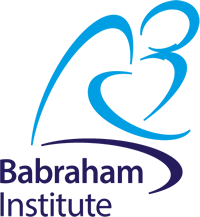Dr S Cook
No more applications being accepted
Competition Funded PhD Project (European/UK Students Only)
About the Project
Please click on the Babraham Graduate Programme button above for details of how to apply for this project.
The RAS-RAF-MEK-ERK1/2 pathway is well known as a growth factor signalling pathway that drives cells through G1 and into S phase of the cell cycle to promote cell division. Once critical way in which it does this is to drive expression of the D-type cyclins such as cyclin D1 (CCND1), which activate cyclin-dependent kinases 4 and 6 (CDK4/6). Indeed, de-regulation of this pathway promotes deregulated cell division in cancer. Paradoxically, ERK1/2 signalling can also drive cell cycle arrest and differentiation and is a critical pathway in cell fate determination during normal development.
How can activation of the same signaling pathway drive such apparently opposing cell fates? This question has occupied – even vexed - cell and developmental biologists for many years.
Whilst there is now doubt that the effects of ERK1/2 signalling are in part determined by context – for example, integration with parallel coincident signalling pathways – studies with conditional mutants of RAF that allow titration of ERK1/2 signalling in the same cell line have shown that distinct thresholds of ERK1/2 signalling can impart either cell proliferation or cell cycle arrest. This has led to the acceptance that ‘moderate’ levels of ERK1/2 signaling can promote CCND1 expression and cell proliferation whereas ‘high’ levels of ERK1/2 signalling can drive the expression of CDK inhibitors (CDKIs) such as p21CIP1. However, what does ‘moderate’ or ‘high’ mean in this context?
We have recently returned to this question based on two developments in the lab. First, we have recently demonstrated for the first time that the CDKI p57KIP2 (encoded by CDKN1C, a tumour suppressor that is deregulated in the developmental disorders Beckwith-Wiedemann syndrome and Silver Russell syndrome) is an ERK1/2 target gene that is induced by ‘high’ levels of ERK1/2 signalling (Manuscript in preparation). We want to understand how ERK1/2 regulates p57KIP2 expression. Second, working with the BI Mass Spectrometry facility we have developed MS assays that allow absolute quantification of the level of ERK1/2 activity (Manuscript in preparation). This, together with the use of high content imaging, means that we can now start to attribute levels of ERK1/2 activation (even concentrations of active ERK1/2) with specific genomic and biological events.
Hypothesis.
Discrete thresholds of ERK1/2 activation direct specific programmes of gene expression to dictate cell proliferation or cell cycle arrest.
In this PhD project the student will test this hypothesis using multidisciplinary approaches focusing in part on p57KIP2 and more broadly adopting genome wide strategies to ascribe genomic changes ot specific ERK1/2 stoichiometries. This will include
1. Analysing how ERK1/2 regulates p57KIP2 transcription. Using conventional gene reporter techniques we will identify ERK1/2 responsive elements in the p57KIP2 5’UTR, identify TFs that bind and how they are regulated by ERK1/2.
2. Analysing genome wide changes in chromatin accessibility associated with discrete ERK1/2 activtity thresholds. In parallel with 1. we will employ ATAC-seq to define changes in chromatin accessibility associated with cell division and cell cycle arrest. This data set will inform our understanding of how ERK1/2 regulates p57KIP2 (Aim 1) but will have far wider implications
3. Quantifying ERK1/2 stoichiometry associated with specific biological endpoints. In parallel we will quantify the level of ERK1/2 activation associated with these genome and biological endpoints and integrate with high content imaging data to ascribe specific genes to specific ERK1/2 stoichiometries.
In the longer term these data sets will be integrated with modelling approaches to build on our understanding of how discrete ERK1/2 quanta drive specific genomic and biological responses.

 Continue with Facebook
Continue with Facebook

